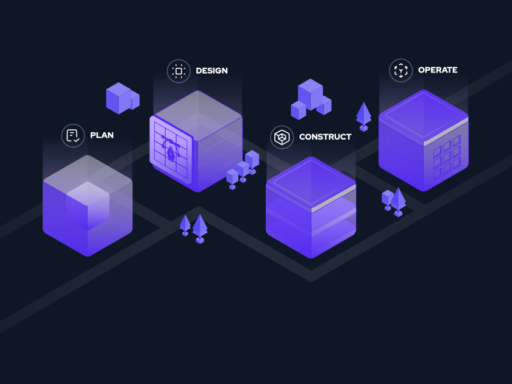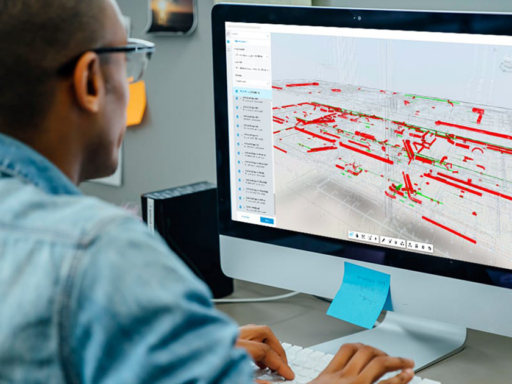Introduction
The use of BIM in the planning and design of a building can reduce material waste by 80%. Here we will explore the relationship between BIM and sustainability in construction.
“Within the realm of the constructed environment, we should think to conceptualize sustainability as a guide for constructing and managing structures with the aim of reducing negative environmental effects while optimizing social and economic advantages.” – Josefina S., Architect
The construction industry is increasingly focusing on sustainability and efficiency to leave a positive legacy for future generations.
Highlights
- BIM is a collaborative methodology that minimizes the construction industry’s impact on the planet.
- BIM manages information throughout the entire lifecycle of a building, from the concept to potential demolition.
- BIM encourages the reuse and sustainable lifecycle of buildings.
- BIM enables simulations of efficiency and energy savings, as well as resource management.
- BIM facilitates the maintenance and management of building assets over time.
- Tools like laser scanning contribute to BIM by allowing the reutilization of existing buildings and minimizing waste.
- BIM aligns with the concept of the circular economy, aiming to minimize waste and maximize resource reuse.
A Collaborative Methodology to Reduce Impact
BIM’s collaborative nature extends beyond the initial construction phase. It is a dynamic platform for ongoing facility management, enabling stakeholders to make informed decisions about energy consumption, maintenance schedules, and overall building performance.
The interconnected nature of BIM ensures that all parties involved are on the same page, reducing misunderstandings and potential errors. This continuous collaboration contributes to the sustainable operation of the built environment, ensuring that structures are not only efficiently constructed but also maintained with a minimal environmental footprint.
“BIM is not just a technological evolution; it is a commitment to a world where resources are used intelligently and sustainably.” – Priscila Deparsia, Architect.
The lifecycle of a Building Through BIM Dimensions
BIM encourages rethinking how buildings can be construct and have a sustainable design and lifecycle. By incorporating various dimensions, such as 3D, 4D, 5D, 6D, and 7D, BIM allows for the management of information from the initial idea to detailed planning, facilitating the coordination between different disciplines.
The dimensions represent different aspects of the construction phases. As the project progresses, additional information can be added such as costs, time and coordination between disciplines. Recently sustainability has been integrated into BIM, enabling simulations of efficiency, energy savings, and resource management.
BIM allows for a comprehensive understanding of how a building will function and perform before it is even constructed. BIM’s ability to incorporate different dimensions allows for a more comprehensive understanding of the sustainable design and construction process:
- The 4D dimension adds the element of time, allowing for the visualization of the construction sequence and scheduling.
- The 5D dimension introduces cost estimation and budgeting, providing valuable insights into the financial aspects of the project.
- The 6D dimension enables the integration of sustainability by incorporating data on energy consumption, carbon emissions, and environmental impact. This allows for the identification of potential improvements and optimizations in terms of energy efficiency and resource management.
Maintenance and Asset Management
BIM also facilitates the maintenance and management of building assets over time allowing for the integration of new tools and technologies, such as laser scanning. This last one for example enables the reutilization of existing buildings by providing accurate measurements and data, allowing for example the repurposing of historical buildings and minimizing waste.
Maintenance with BIM
By utilizing BIM technology you can streamline and improve the maintenance process, ensuring the longevity and efficiency of your building.
-
- Preventive Maintenance: BIM digital model of your building can be used to identify potential maintenance issues before they become major problems.
- Efficient Planning: BIM enables to plan and schedule maintenance activities. It allows to identify the most efficient routes and methods for maintenance tasks, minimizing disruption to building occupants.
- Data Integration: BIM integrates with other systems, such as facility management software, allowing you to access and update maintenance data in real-time.
- Cost Savings: Preventive maintenance whit the use of BIM helps avoid costly repairs, improves efficiency and efficient planning minimizes downtime and labor costs.
Asset Management BIM
It is possible to efficiently manage and maintain a building’s assets throughout its lifecycle with BIM. Here are 5 benefits:
-
- Centralized data: Asset Management BIM allows you to store all relevant information about your building assets in one central location, making it easy to access and update.
- Real-time collaboration and monitoring: you can monitor the condition and performance of your building assets in real-time, allowing you to identify and address any issues promptly.
- Predictive maintenance: By analyzing data collected through Asset Management BIM, you can predict when maintenance or repairs will be needed.
- Optimized energy consumption: This enables you to track and analyze energy usage in your building assets, helping to identify areas for improvement and implement energy-saving measures.
- Cost savings: By optimizing maintenance schedules, minimizing downtime, and improving energy efficiency, Asset Management BIM can help you reduce operating costs and increase your return on investment.
By implementing Asset Management BIM, we can ensure the long-term sustainability of our buildings and with that comes economic benefits.
Circular Economy and BIM
The circular economy concept aligns with BIM as both aim to minimize waste and maximize resource reuse. BIM enables more efficient resource management by providing accurate information and simulations and also allows reutilization of buildings for new functions reducing waste in the construction industry.
In cases where demolition is necessary, BIM allows for better planning and minimizes the environmental impact by tracking and managing waste. Through BIM, the construction industry can transition towards a more sustainable and circular approach, benefiting both the economy and the environment.
A circular economy could reduce global CO2 emissions from building materials by 38% in 2050, by reducing demand for steel, aluminium, cement, and plastic.
“It is immensely satisfying to reach a point where reusing existing materials, minimizing waste, improving work efficiency, and cutting significant costs are achievable, all while making a substantial contribution to reducing environmental impact. Working with BIM software has empowered me to make more informed decisions.” – Josefina S., Architect
Conclusion
BIM is not just a technological evolution but a commitment to a world where resources are used intelligently and sustainably. By adopting BIM, the construction industry can minimize its impact on the planet and leave a positive legacy for future generations.
Through the collaborative and information-driven approach of BIM, buildings can be designed, constructed, and maintained in a more sustainable manner.
Let’s embrace BIM and create a more sustainable future for all.






